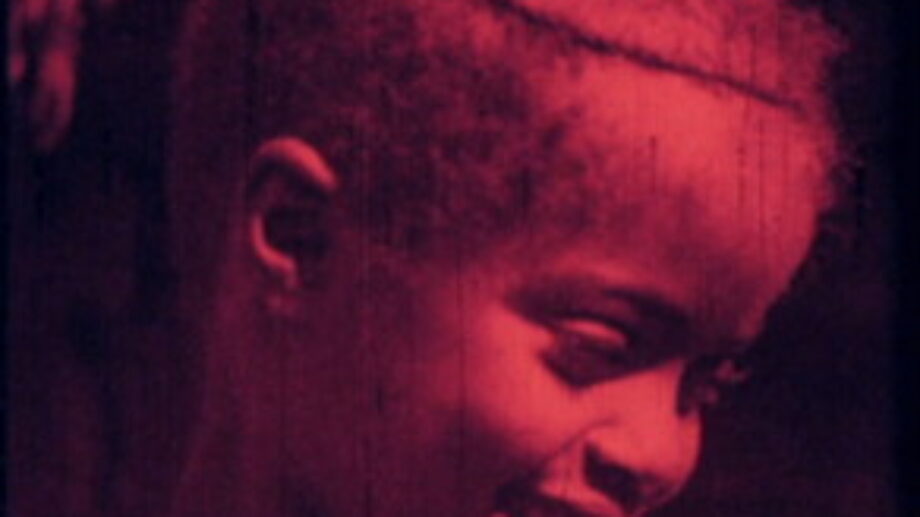
An image from Yervant Gianikian and Angela Ricci Lucchi's Pays Barbare
Ingrid Raison is a member of the second annual Locarno Critics Academy.
At the forefront of the documentary movement since 1986, Yervant Gianikian and Angela Ricci Lucchi have relentlessly aimed in their work to make archival footages speak. Using original footage as a palimpsest, they resculpt it by decelerating the film’s speed, rephotographing it, reframing a shot, or adding a soundtrack.
Explicitly political, their films consider the upheavals of colonialism and war and, ultimately, question our memory. From their first documentary, Dal polo all’equator, which drew upon footage from around the globe to celebrate the virtues and achievements of European colonialism, to their trilogy on World War I—Prigioneri della Guerra (1995), Su tutte le vette è pace (1998), and Oh! Uomo (2004)—the filmmakers have established themselves as archeologists of argentic film.
Faithful to their themes of predilection, Gianikian and Lucchi deconstruct colonial exoticism and try to build an anthropological study of fascism in their new film Pays Barbare (Paese Barbaro), which premiered at the 66th Locarno Film Festival. Here, they set their lens on the exactions of Mussolini's regime in East Africa, particularly in Libya and Ethiopia.
The fascinating claim of their work is how remodeling deteriorating material in a state of “chemical amnesia” can revive our collective memory and redefine our representation of colonialism.

An image from Yervant Gianikian and Angela Ricci Lucchi's Pays Barbare
The introductory scene translates this idea. We are brought back to April 28, 1945, the day of Il Duce’s death. The crowd agglutinates around the corpses of pro-Mussolini partisans. As the film’s speed is reduced, anonymous faces begin to stand out. Their traits, expressions, and eyes mirror the vivid reality they are experiencing. A multitude of feelings emerge from their intense stare: deliverance, freedom, elation, hopefulness… even disbelief. The alteration of the images doesn't interfere with the actual content, but acknowledges the passing of time and the erstwhile presence of the people on screen.
Individuals emerge from the sea of people and we start to see movements: hands waving at the camera or a leg passing over the corpses. By breaking down the motions, the film encapsulates the most minute details and engraves them in the annals of history.
Another piece of striking footage, supposedly shot in 1936, embodies the reality of Mussolini’s presence in Africa. Acting as a terrifying metaphor for colonialism, the sequence shows an Italian soldier vigorously scrubbing the bare nape of a young Ethiopian woman who sits patiently, at the soldier’s mercy. The act is far from trifling. Two minutes of that sequence suffice to sum up the ethnic genocide perpetrated by the regime.
Since these films were originally intended for private home viewing, the multiple scratches “are indications of who owned the films, those sequences to which they returned over and over,” according to Gianikian and Lucchi. The “chemical amnesia” that might otherwise be seen as contamination of their material gains significance as a palpable commentary on the viewers of that time.

A photograph by Miroslav Tichý
At the crossroad of visual art and film, the work of Yervant Gianikian and Angela Ricci Lucchi share an interesting similarity with the photographs of Czech artist Miroslav Tichý, known for his worn out portraits, often out of focus, blemished by dust in the camera, or overexposed. Even though their subjects differ, both interact with the chemical activity of their materials and how they can be reframed and recomposed.
While Gianikian and Lucchi dig into the scraped surface of their footage, Tichý recreates—thanks to his homemade cameras built with at-hand materials (cardboard tubes, cans)—the passing of time. The blurry fog that masks their materials is rendered meaningful and adds to the hypnotic and sensory pleasures one feels when looking at their films and photographs.
Beyond its form, Gianikian and Lucchi capture the moving image's core: its fluid essence. Miroslav Tichý’s photographs also show an undeniable attention to his subjects’ movements—how they seem to be on the verge of moving out of the frame. By distorting their respective media, these three artists aim to touch the very essence of the image, highlighting its fundamental bond to movement and creating a cinematic awareness that wasn't there before.



